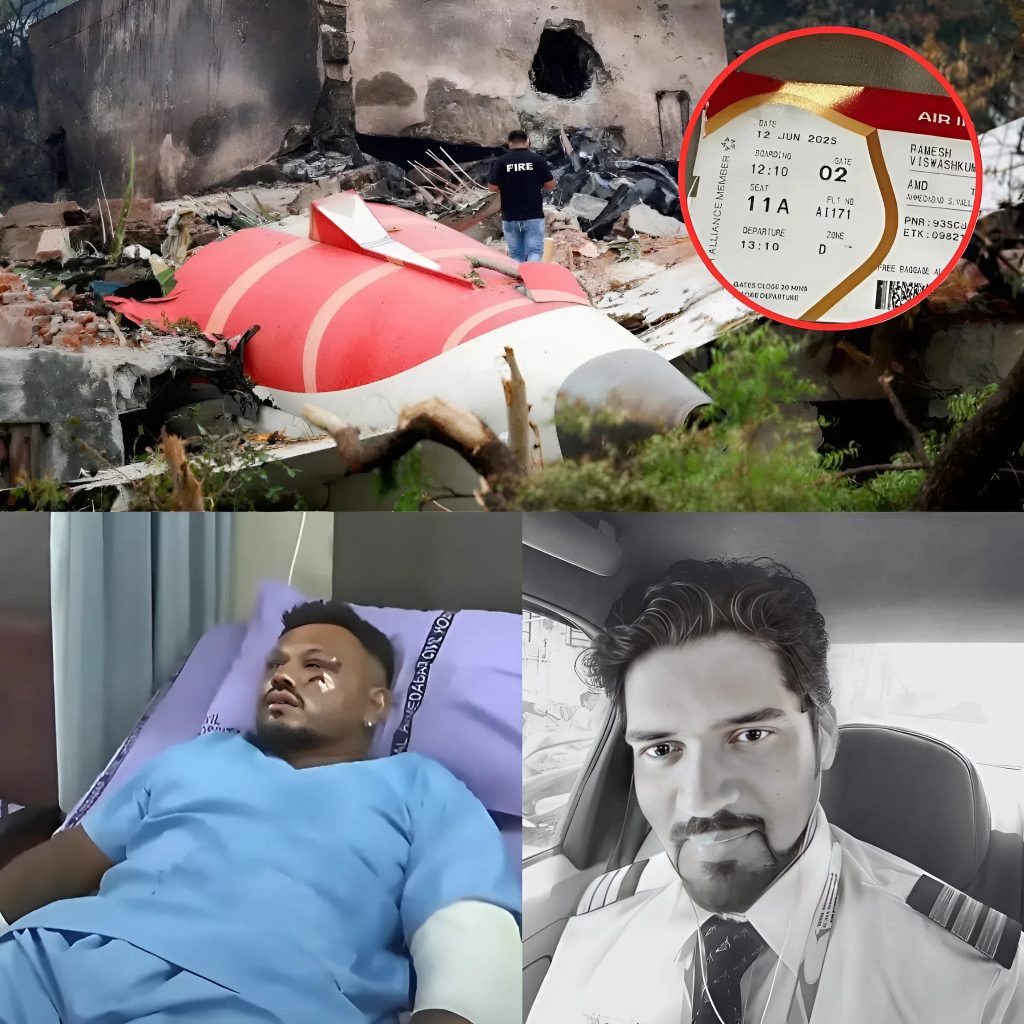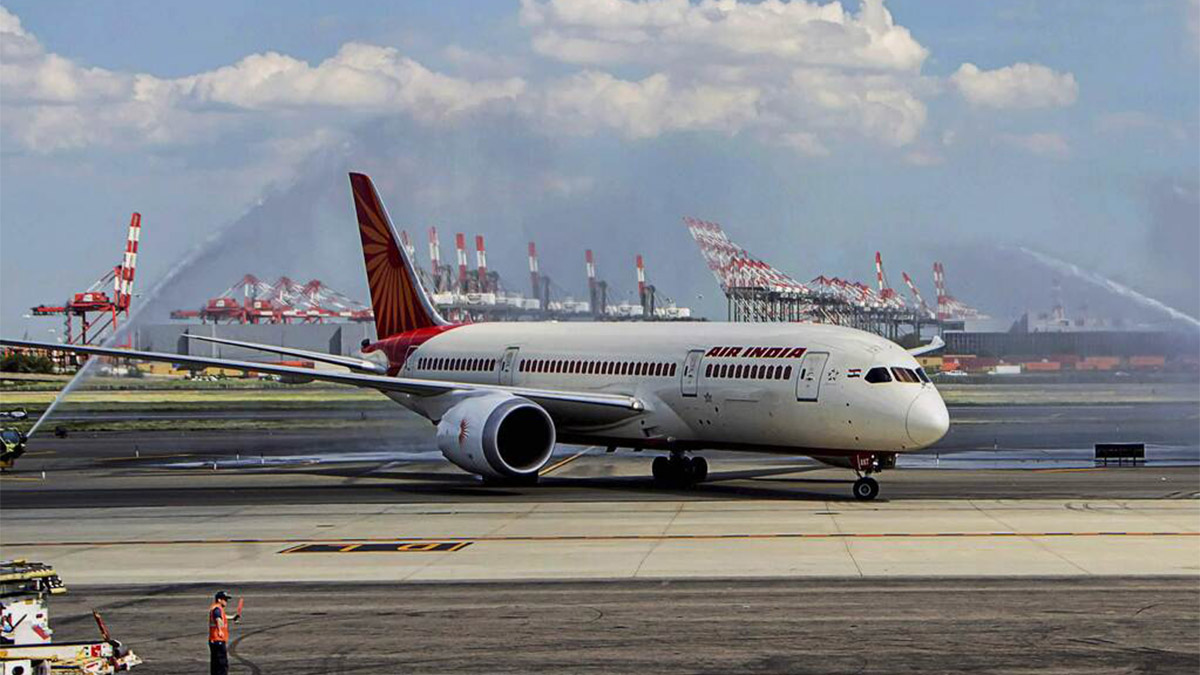
“He was never on the plane” has become a phrase echoing across social media and news platforms after the emergence of new images that shed light on the actions of the Air India crash survivor. The man, whose identity is still being verified by authorities, was reportedly spotted walking calmly through a restricted area while speaking on his mobile, shortly after the tragic incident. These revelations have ignited widespread speculation, with many questioning his actual connection to the doomed flight and whether he was truly among the passengers. Witness accounts and leaked airport security footage show the man moving with an air of composure that sharply contrasts with the chaos and panic typically associated with such a disaster. While most survivors of aviation accidents are visibly shaken, disoriented, or in need of medical attention, this individual’s demeanor has drawn curiosity and even suspicion.
)
The images reveal him navigating the tarmac without visible signs of injury, casually holding his phone to his ear, and maintaining a steady pace, as though engaged in a routine conversation rather than emerging from the wreckage of a catastrophic event. Aviation experts point out that in the aftermath of an aircraft crash, survivors are generally escorted by emergency personnel to safe zones for immediate assessment. However, the absence of any emergency responders in proximity to the man has raised questions about the timeline of events and how he was able to access areas cordoned off for security and rescue operations.
Some observers have suggested that he may have been part of the ground crew or an airport staff member mistakenly identified as a survivor, while others theorize that he may have been a passenger who disembarked earlier under unusual circumstances. Officials investigating the Air India crash have acknowledged that the new images are now part of their evidence review, though they have refrained from making definitive statements about the man’s role or whereabouts prior to the incident.

Airport security protocols typically require strict documentation of all passengers boarding and deplaning, but discrepancies can occur in cases where last-minute changes or emergencies arise. If it is confirmed that he was never on the plane, it would raise serious concerns about how initial survivor lists are compiled and verified. On the other hand, if he was indeed on the flight, the calm and unbothered behavior caught on camera could be explained by factors such as shock, training, or simply a unique psychological response to trauma. Psychological experts emphasize that human reactions to disaster vary widely, and not all survivors exhibit visible signs of distress.
Some may instinctively focus on practical matters such as contacting family, which could explain his phone call. Nevertheless, the combination of his calmness and the absence of other survivors in the immediate vicinity has amplified public intrigue. Social media platforms have been quick to amplify the story, with hashtags related to the Air India crash and the mysterious man trending across multiple countries. Memes, conspiracy theories, and amateur investigations have flooded online forums, with users dissecting each frame of the footage in search of clues. Some claim to have identified inconsistencies in his clothing compared to what passengers were wearing when boarding, while others point to a lack of soot, dirt, or visible damage to his attire as evidence that he was not exposed to the crash environment.

Air India representatives have urged the public to avoid speculation until the investigation is complete, stressing that misinformation can hinder official efforts and cause unnecessary distress to the families of victims and survivors. Meanwhile, law enforcement agencies are working in coordination with aviation authorities to trace the man’s movements before, during, and after the crash. Tracking his phone records, access logs, and eyewitness statements will be crucial in determining the truth. In the broader context, this incident has reignited debates about airport security measures, crisis communication, and the accuracy of initial survivor reports in aviation disasters.
In the age of instant information, images and videos can spread globally within minutes, shaping public perception long before official statements are released. This can create pressure on authorities to respond rapidly, sometimes at the risk of incomplete or premature conclusions. The case of the calm man on the is a reminder of how a single image can capture the public’s imagination and influence the narrative surrounding a major event.
Regardless of whether he was a genuine survivor or a bystander caught in the wrong place at the wrong time, his story has become intertwined with the tragedy, ensuring that his actions will be scrutinized as part of the historical record of the Air India crash. The coming days are expected to bring more clarity as investigators analyze passenger manifests, security footage, and physical evidence from the crash site. Until then, the mystery remains unresolved, with the phrase “He was never on the plane” serving as both a tantalizing possibility and a cautionary reminder of how easily assumptions can take root in the absence of verified facts.
What is certain is that the images have already made a lasting impact, fueling discussions not only about this individual’s identity but also about the broader implications for safety, trust, and truth in the world of air travel.
A Living Symbol of Hope and Resilience
The image of a man walking away from a fiery, catastrophic crash while talking on his phone remains one of the most viscerally powerful visual narratives of 2025. It encapsulates something beyond randomness—an intersection of chance, presence, and human resilience.
Ramesh himself has repeatedly said he cannot explain how he survived. Survivor’s guilt weighs heavily; he continues to grapple with why he lived when so many others did not—including his brother
From a broader vantage point, his story has reignited public interest in aviation safety, crash survivability research, and the role of emergency exit accessibility. It underscores the unpredictable nature of survival in catastrophic incidents—and pushes the industry to examine structural design, emergency protocols, and evacuation training.
In a tragic event that will long haunt memory, one man’s survival stands out as both inexplicable and profound. The headline, “He was never on the plane”: New images reveal the actions of the Air India crash survivor, who is seen walking calmly while talking on the phone…, speaks not just to disbelief, but to the symbolic power imbued in that still frame.
Beyond the chaos, that image represents a human moment of grace and fragility: a man who emerged from unimaginable devastation relatively intact, walking as though continuing an ordinary conversation. It challenges reason and stirs emotion—highlighting the extraordinary randomness of fate. His survival reminds us that even amid tragedy, life can persist in the most unexpected ways.